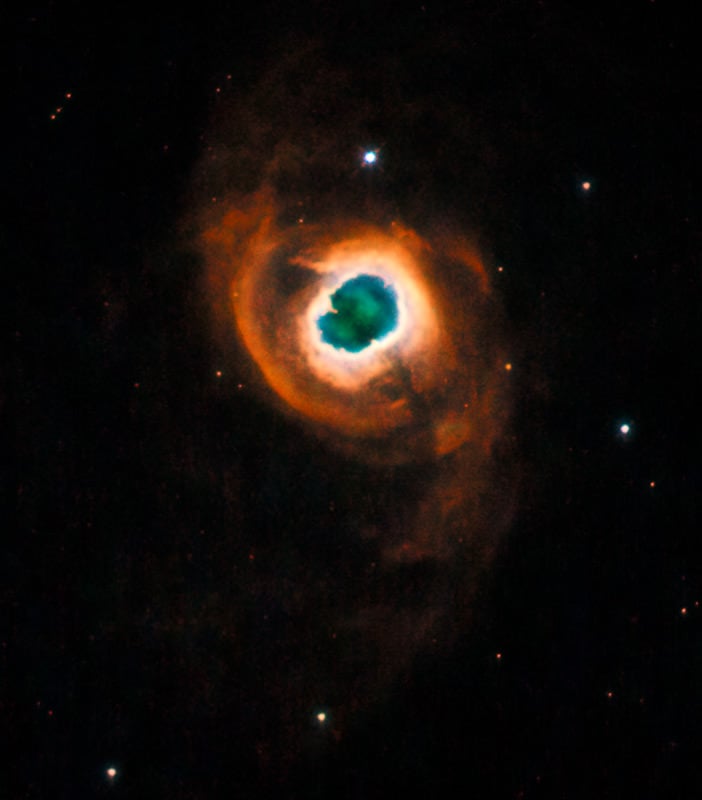[/caption]
Last week
we looked back at some of the greatest images and discoveries produced by the Hubble Space Telescope's Wide Field Planetary Camera 2,
the workhorse optical camera that will be replaced with the new and improved WFPC3 during the Hubble servicing mission this week. Now, in tribute to the legacy of WFPC2, the telescope's science team has released this image as the camera's final "pretty picture," a planetary nebula is known as Kohoutek 4-55 (or K 4-55). This image is the last hurrah for the camera that has provided outstanding science and spectacular images of the cosmos.
K 4-55 is nearly 4,600 light-years away in the constellation Cygnus. It is one of a series of planetary nebulae that were named after their discoverer, Czech astronomer Lubos Kohoutek. A planetary nebula contains the outer layers of a red giant star that were expelled into interstellar space when the star was in the late stages of its life. Ultraviolet radiation emitted from the remaining hot core of the star ionizes the ejected gas shells, causing them to glow.
In the specific case of K 4-55, a bright inner ring is surrounded by a bipolar structure. The entire system is then surrounded by a faint red halo, seen in the emission by nitrogen gas. This multi-shell structure is fairly uncommon in planetary nebulae.
The colors represent the makeup of the various emission clouds in the nebula: red represents nitrogen, green represents hydrogen, and blue represents oxygen. This Hubble image was taken by the Wide Field and Planetary Camera 2 on May 4, 2009.
The scientific and inspirational legacy of the camera will be felt by astronomers and the public alike, for as long as the story of the Hubble Space Telescope is told.
Source:
HubbleSite
 Universe Today
Universe Today
